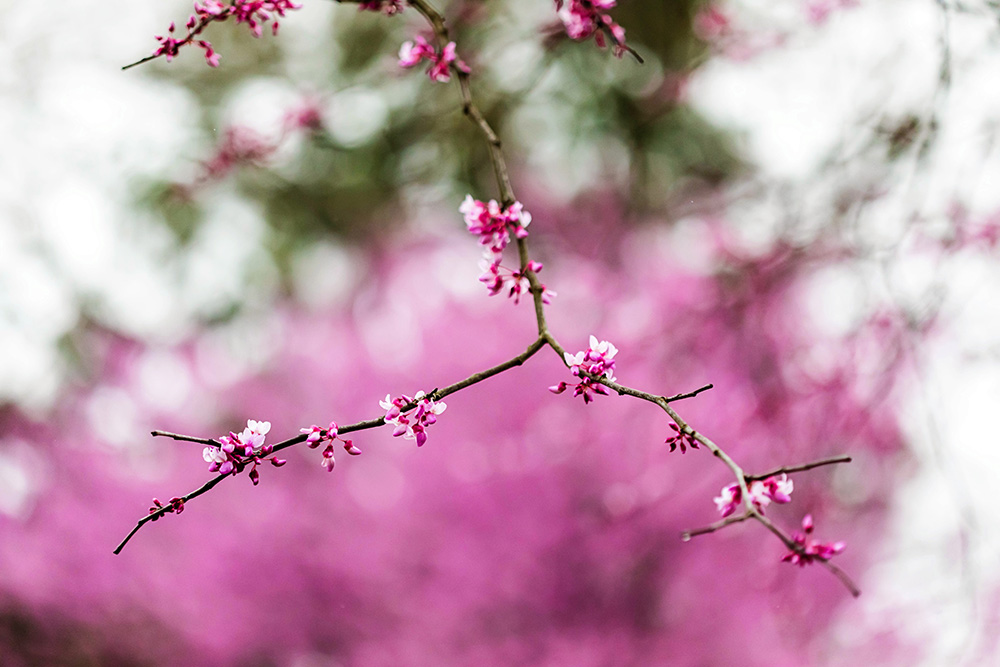NatureZen: The Spring So Far
words and photos by Melissa McMasters
I love everything about spring. The pastel color palette, birds hoarsely coming back into song, pollen-dusted bees emerging from wildflower blooms…spring contains enough treasures for an entire year.
Because the season unfolds slowly at first, I often find myself noticing one thing in particular every day and then spending some time learning about it. Today I want to take you through some of those things I’ve noticed in the Old Forest over the past few weeks.
It’s a late-February tradition unlike any other: I’m walking in the woods and suddenly there’s a swarm of tiny flying insects all over me. They’re not biting or stinging; they seem more dazed than anything else. I’ve stumbled into the nuptial flight of the American winter ant. This is the only North American ant that prefers cold temperatures. They spend most of the year in nests deep underground to avoid the heat, and in late winter or early spring, they emerge en masse in order to mate. The ones that fly into my face are the males, whose only function in the colony is to reproduce. Thousands of them vie for the hand of one of the large red queens, but their odds are slim–there are fewer than 10 queens per colony. Meanwhile, the small red females do all the work: collecting food, building nests, and tending eggs. If you find yourself in such a swarm sometime, make sure to check out the ground beneath you–there’s a whole society at work!

One of the first flowers to bloom each year, and one that hangs around the longest, is Jacob’s ladder. I love its slightly staggered leaflets (the inspiration for its “ladder” moniker) and the way its flowers lift their faces to the sky on a sunny day.
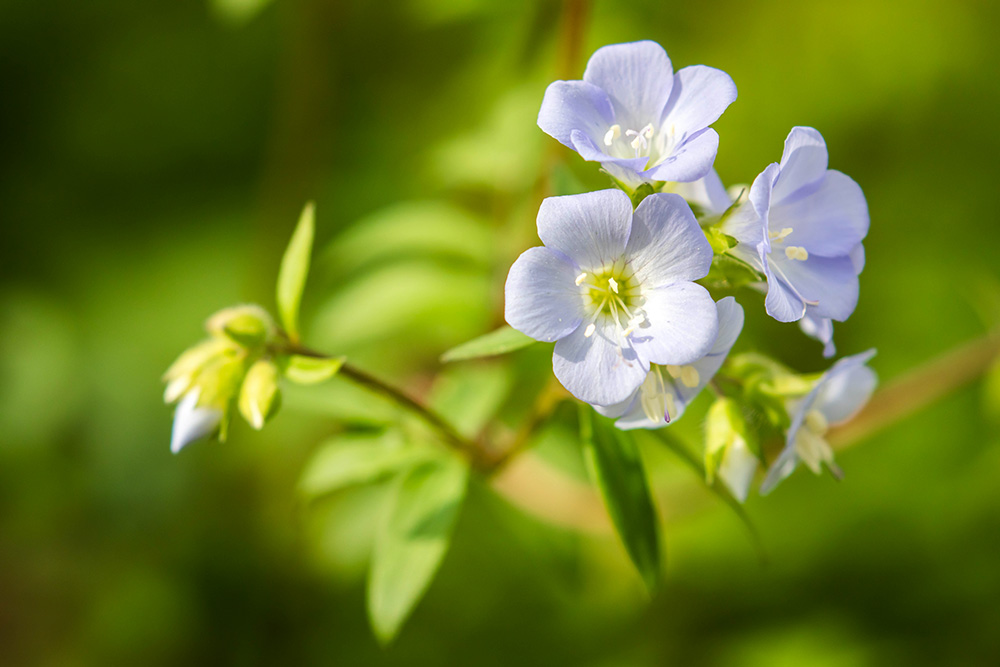
These mushrooms have a name worthy of how striking they are: dryad’s saddles refer to mythical Greek nymphs called dryads who live in and protect trees. The mushrooms provide a perfect perch for them.

Unlike the winter ants, members of a bumble bee colony aren’t spending the cold months together underground. They’ve finished their business in the fall, and after the queen has mated, all the other members die off and she waits out the winter alone. When it gets warm, she emerges to look for a new nest site where she can lay her fertilized eggs and start the process anew. This brown-belted bumble bee queen was cleaning her antennae, tongue, and legs, and I was so charmed by the many ways she was stretching after her long winter’s nap.
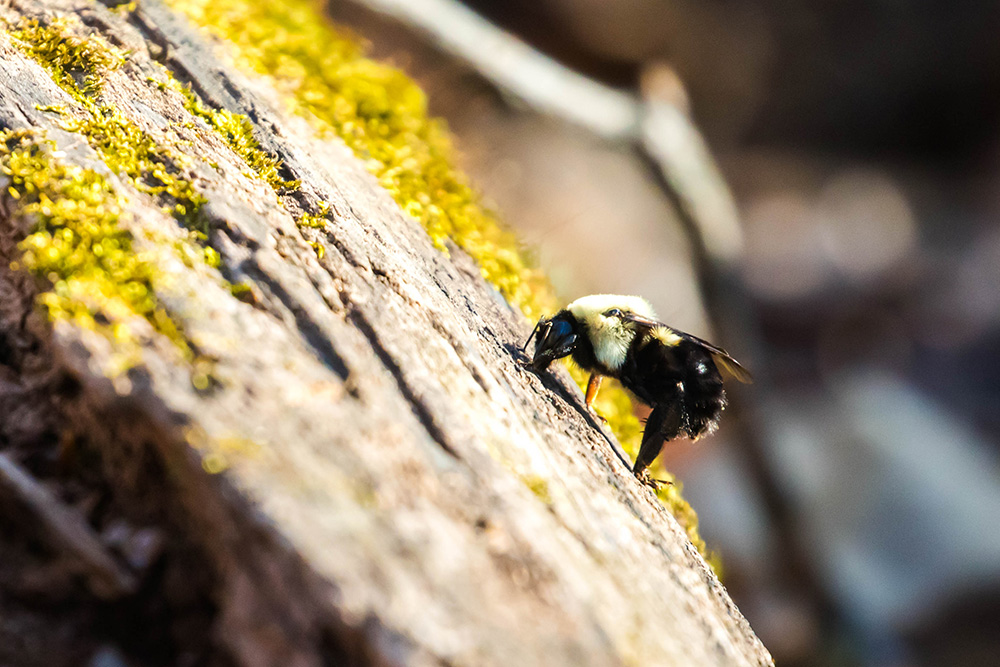
Eastern commas, which overwinter in the forest under loose tree bark, are reliably the first butterflies I see every year. I loved how this one was casting a long shadow at the end of an afternoon.
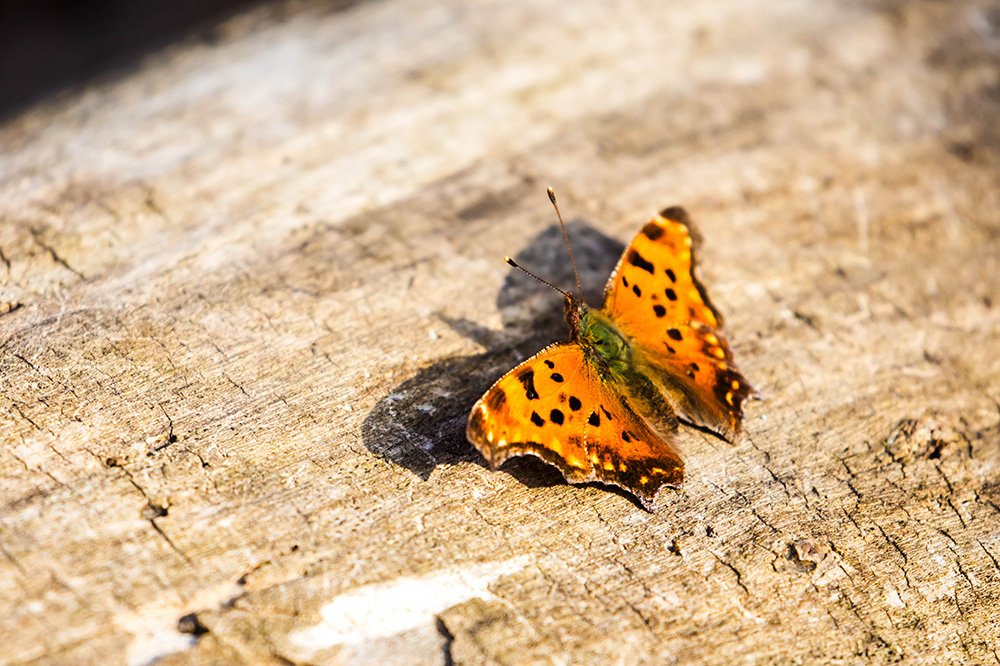
One day, I was watching bees and flies drinking from the flowers of this red maple, and the next it was starting to spill forth neon samaras.
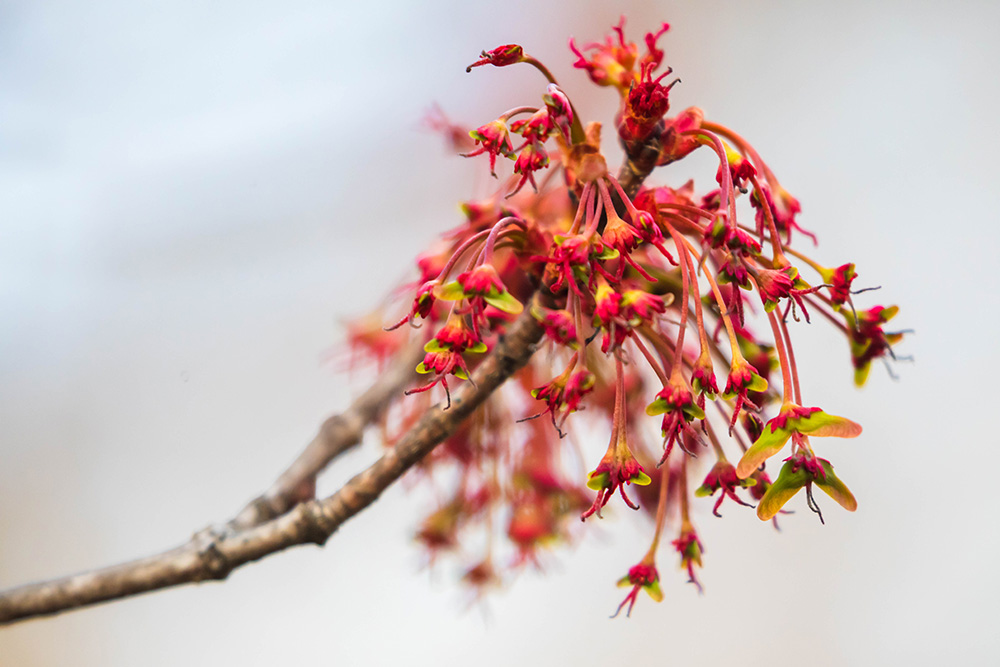
Northern cardinals are a year-round presence, so I don’t always notice them as much as they deserve. But this one caught my attention: it looks like an adult female, but with an extra blush of red on the face and chest. I wondered if it could be a male who hadn’t molted fully, or a female producing more testosterone than usual. (This may have been because I had just read about how male skinks use testosterone to turn their heads orange. I’m not scientifically trained, just a wild theorist!) I never did find out the answer, or see this bird again, but it certainly was a beauty.
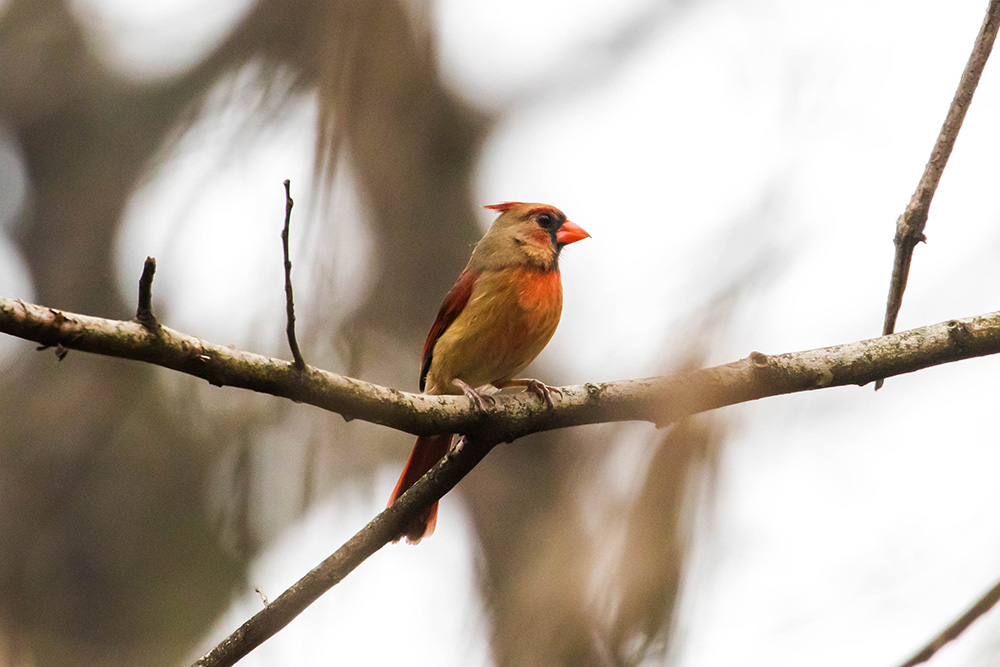
On cloudy days, the blossoms of Japanese cherry trees seem to melt into the sky.
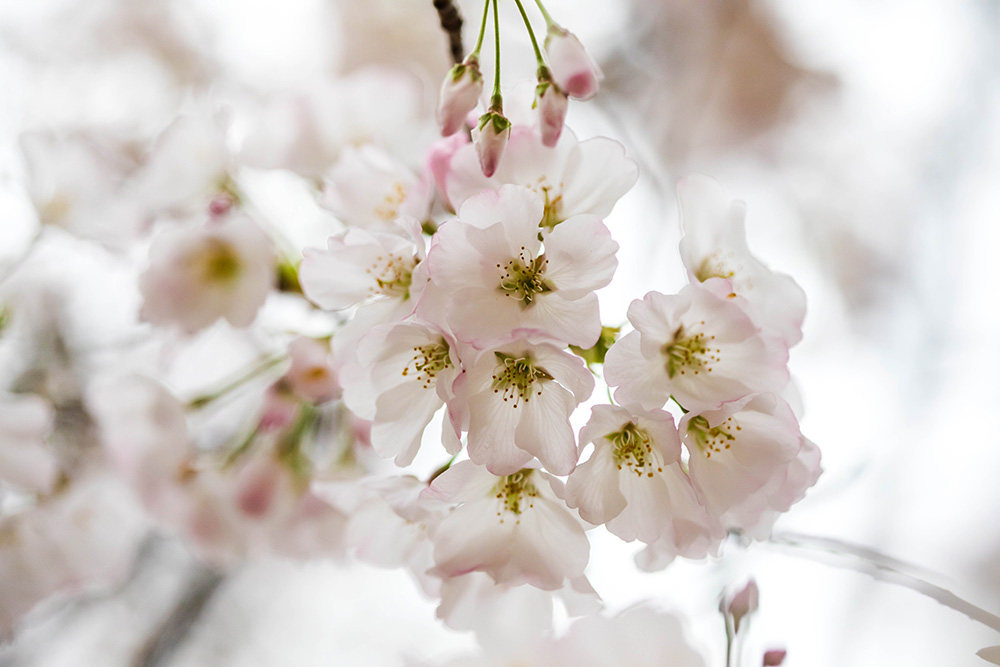
If winter is Weird Duck Time, I submit that spring is Weird Fly Time. Flies are enterprising creatures, and I often see them out searching for flowers to pollinate before there are any such blooms to be had. My favorite new-to-me fly this spring was this flat-footed fly, which my colleague Malle said looked like a fire truck. It moved just as frantically, skating over the surface of this mayapple leaf in the company of its mate. This rapid movement is to pick up honeydew and other food, and it happens in periods of the morning and afternoon when birds are least likely to be active. One doesn’t want to become lunch while having lunch.
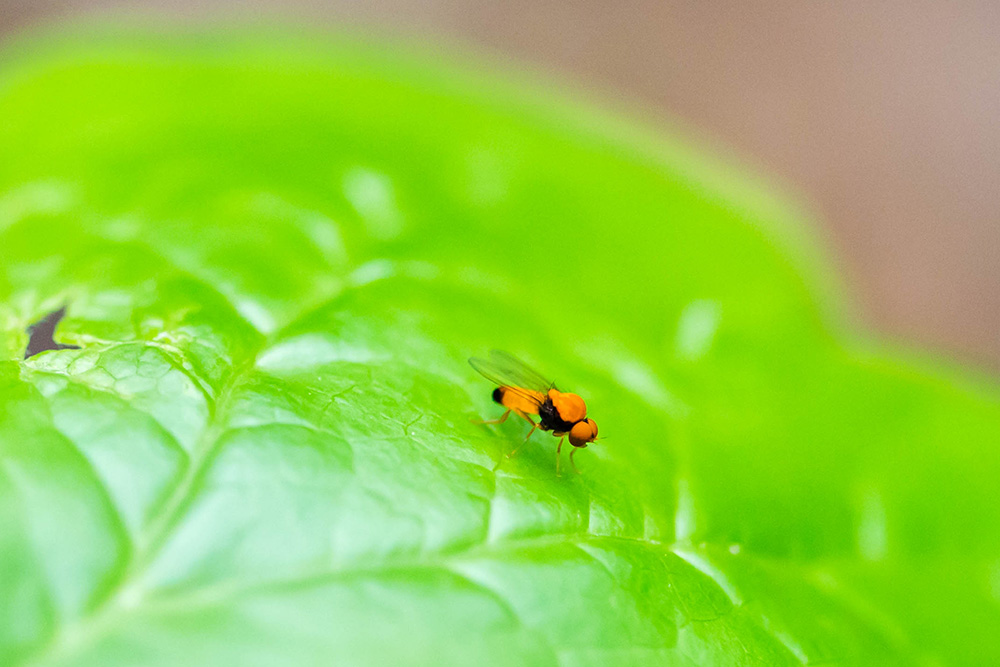
Over the years, I’ve gotten used to seeing some mayapple plants with an orange coating–a fungus known as mayapple rust. But this was the first year I’d seen one on a violet. The aptly named violet rust causes galls on the leaves of members of the wood violet family, so it certainly has no shortage of hosts in the Old Forest.
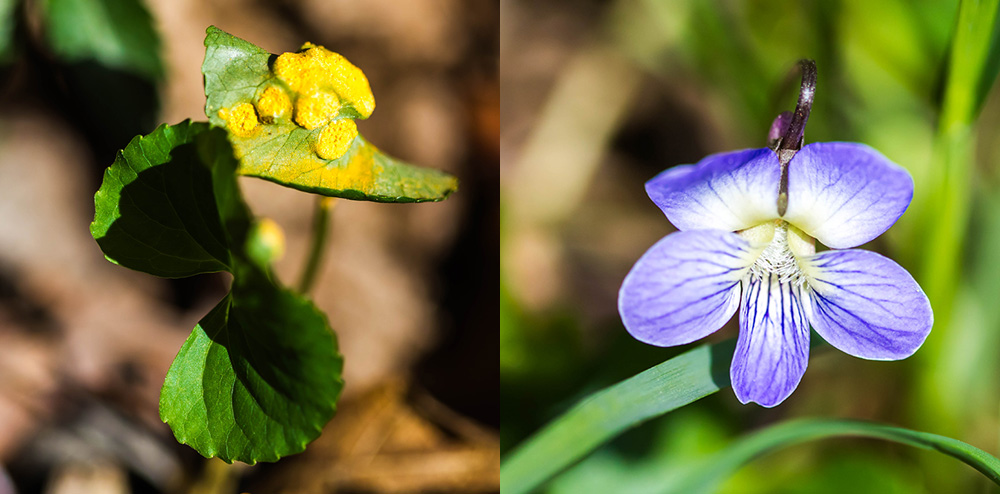
Mining bees are everywhere in the springtime–and nowhere most of the rest of the year. These bees’ life cycles are timed to the blooming of spring wildflowers that emerge before the trees in a forest leaf out, and some of them specialize on a single species of plant. For example, the spring beauty miner only visits the flowers of spring beauty plants. You’d think that would make her a great pollinator, right? In fact, she’s gotten so good at packing pollen onto her legs that she doesn’t wind up spreading much of it to other flowers. Spring beauties instead rely on bumble bees and other pollinators to do the work of fertilizing the flowers.
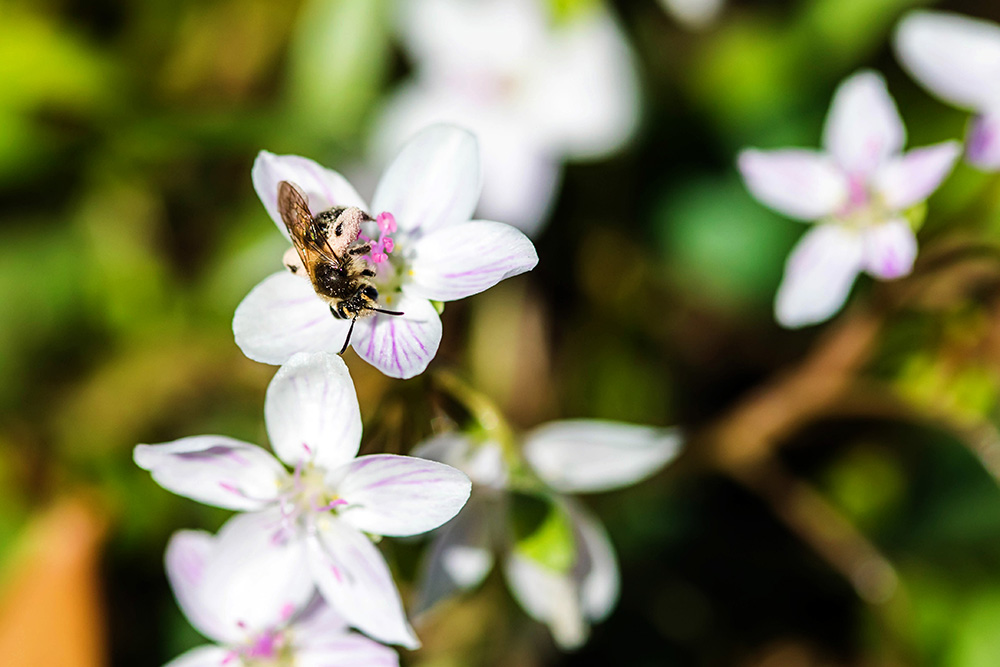
So what are they doing with that pollen? Unequal cellophane bees are solitary, with each female building her own underground nest, and she’s using the pollen as a base for laying her single egg. (This way, when it hatches, it’ll have something to eat.) But solitary doesn’t mean alone–these bees often build very near each other in aggregations that can number up to thousands of nests. My colleague Kim and I were lucky enough to stumble upon an aggregation of a few dozen, and we couldn’t stop watching the bees pop in and out of the nests. It was like Whack-a-Mole, but without the violence!

Last year we seemed to have a real explosion in the population of zebra swallowtails at Overton Park. This only makes sense, because the most numerous tree in our forest, the pawpaw, is the only plant on which this butterfly will lay its eggs. I think we’re off to a good start this year, too, and we’ll have lots more butterflies flying soon if this duo has anything to say about it.
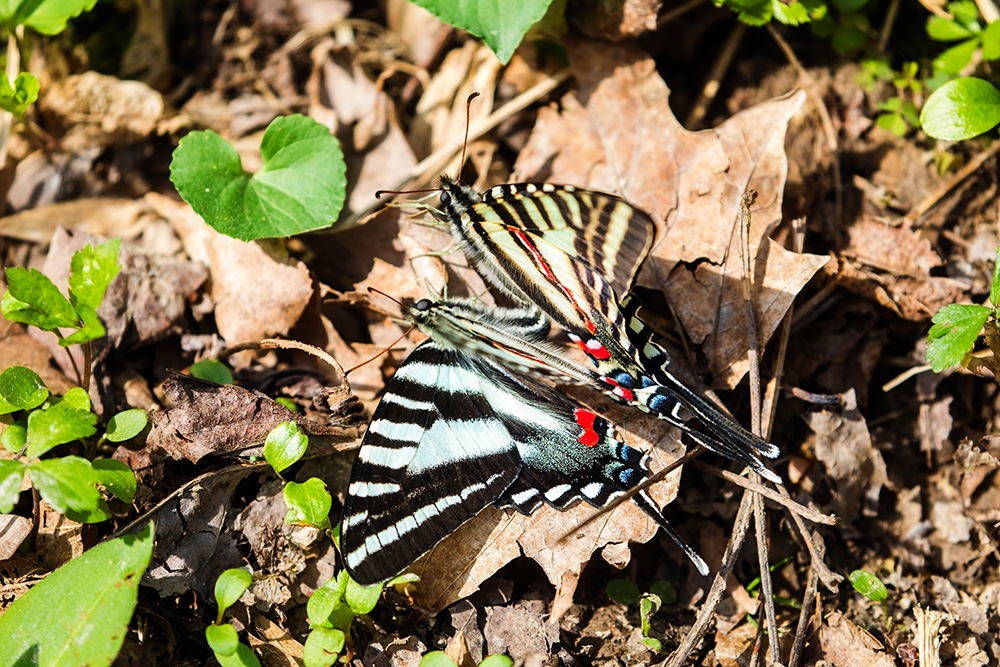
Finally, no spring stroll is complete without appreciating the Eastern redbud, whose branches always suggest kinetic energy to me. This one looks like someone skipping happily amongst the blossoms.

